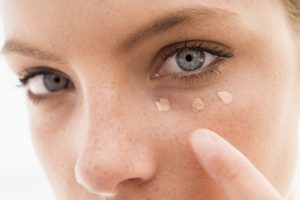Incompetent Surgeons Leave Bad Rhinoplasty Scars For Life

Rhinoplasty is a surgery carried out either to correct the shape of the nose because of deformities or to improve the way it looks. The surgery can also be carried out to improve the way the nose functions. Because it is a surgery that is carried out and there is an incision that will be carried out, there is bound to be scarring.
There are two types of rhinoplasty procedures carried out: open and closed surgery, and both will cause scarring, but minimally if done correctly. Open rhinoplasty is when the incisions are done on the outer part of the nose where the scarring is likely to be visible. In closed rhinoplasty, the incisions are done inside the nose.
An incompetent surgeon will increase the chances of scarring forming by not considering the state of the patient’s skin, the thickness of the skin, and the procedure to best use to prevent scarring tissue from forming.
How Rhinoplasty Scars Form
There are many ways and reasons how scar tissue forms. Some of these are:
- Pollybeak Deformity
After rhinoplasty, the body will cause healing tissue to grow over the bone and cartilage to begin to readjust to the new structure that has been formed. The amount of scar tissue will vary because of the kind of skin that you have. Some people have thicker skin, while others have thinner skin.
Thicker skin will form more scar tissue. Over time, the soft tissue remodeled over the nose will contract and settle naturally, and the nose definition will become more pronounced. In some cases, the soft tissue will not contract fully because its contracting ability is limited. In this case, a scar may form, especially at the lower part of the nose, mainly above the tip.
The scar forms due to thickening because the skin doesn’t thin adequately since the nose cartilage will contract more than the skin. That excess skin is what will form the scar. This kind of scarring is referred to as pollybeak deformity.
- Infection
After the surgery is done, there is a wound on the incision site. Healing takes place in that area. Infection can occur at the site due to bacteria, lack of care of the wound site, or the body’s unable to fight off the bacteria. In such a case, the infection will cause the skin not to heal uniformly and neatly, which will cause the scar to be either more pronounced or the scar tissue thickens.
- Smoking
Smoking lowers the oxygen levels in the blood as a result of the carbon monoxide inhaled. For healing to occur quickly and neatly, the site needs oxygen to hasten the process. For smokers, the amount is significantly reduced, which can cause infection and worsening of the wound, leading to scar tissue formation.
- Sun Exposure
The sun’s UV rays will darken the scar tissue that is forming. Exposure to the sun can make the scar more obvious, especially when it contrasts sharply with the skin around it, the nose.
- Age
As people grow older, healing takes longer because of the loss of the skin’s elasticity, collagen, and other skin components that help quicken healing. For older rhinoplasty patients, an incompetent surgeon will not consider their skin and may carry out an open rhinoplasty when a closed one will be a better option for an older person.
- Skin Conditions and Allergic Reactions
People with skin conditions such as dehydrated skin and eczema can cause an infection at the incision site, leading to the wound taking longer to heal. For people with very dry skin, moisturizing will help the wound heal better without additional scarred tissue forming.
A good cosmetic surgeon will be able to advise you on the best ointments and creams to use to prevent more scarring. For people with conditions such as eczema, the surgeon will ensure that the medications used to manage the wound will not cause flare-ups and increased irritation, especially at the wound.
Are scars from rhinoplasty common?
Whether scars happen depends on how the surgery is done:
Closed Rhinoplasty
- All cuts (incisions) are made inside the nose.
- No visible scars on the outside.
- Often used for small changes.
Open Rhinoplasty
- A small cut is made on the strip of skin between the nostrils (columella).
- This may leave a tiny scar, but it usually fades and becomes hard to notice over time.
How To Prevent Excessive Scarring
An incompetent surgeon will cause bad rhinoplasty scars because of a lack of knowledge or experience. In the case of pollybeak scarring, a plastic surgeon should not reduce the nose cartilage and boneless than the skin envelope that will cover the nose. For people with thick skin, the surgeon should carry out less size reduction and do more of the shape improvement of the nose.
When carrying out pen rhinoplasty where the incision takes place on the outer part of the nose, a good surgeon will make careful incisions to reduce scars forming. A columellar incision or V-Plasty incision is when the surgeon makes a V-shaped cut to carry out the cartilage reshaping. While carrying out this process, the surgeon ensures no chance of increasing the irritation that will affect the healing process or prolong the healing time.
Closing the incision is also crucial to ensure that there is minimal scarring. If an incompetent surgeon closes with large stitches or jagged stitches, the chances of scar tissue forming are high because of puckering around the stitch areas.
In cases where the skin is older or is prone to dryness, the surgeon should ideally prescribe medication that will not cause the skin conditions to
Revision Rhinoplasty
There are steps taken to correct the bad scarring caused by an incompetent surgeon. These tend to occur over a series of treatments such as steroid injections or taping, and then the surgeon will see if this will help correct the scarring. Then after two years, a revision rhinoplasty can be done with a focus on shape improvements rather than scar removal or thinning the soft tissue.
The reason is that these treatments may cause more injury, which will lead to the development of even more scar tissue. Revision rhinoplasty is best carried out by an experienced plastic or cosmetic surgeon experienced in revision rhinoplasty.






